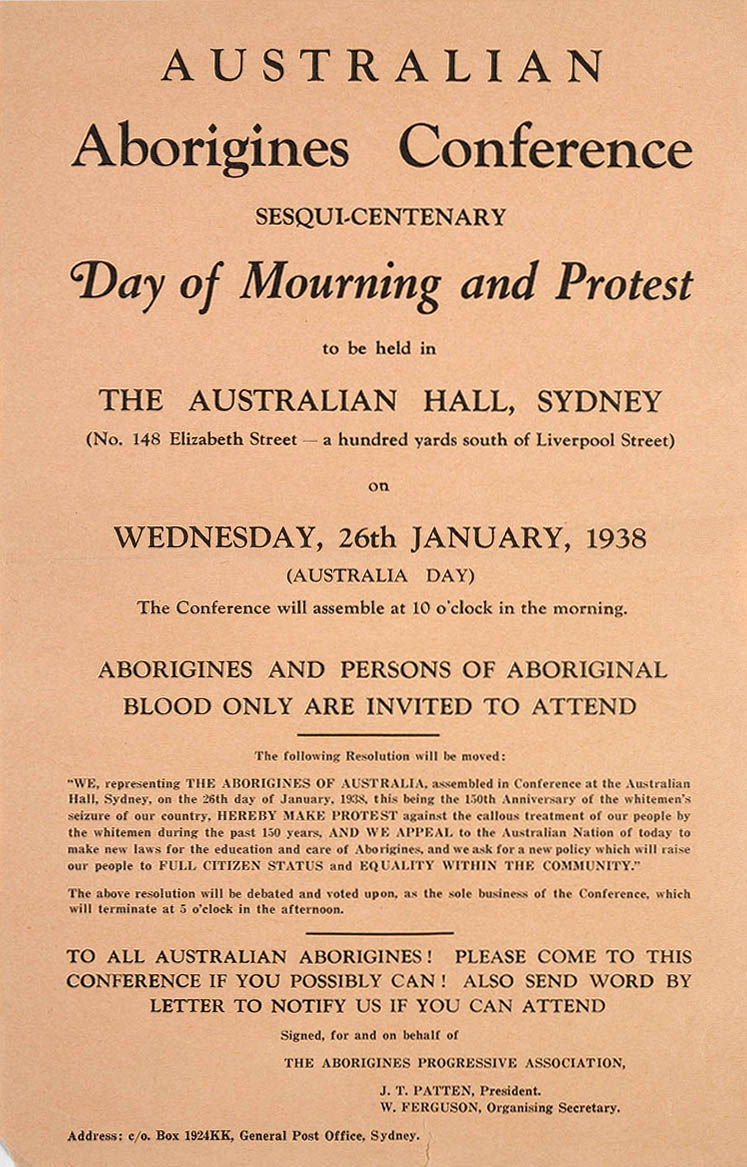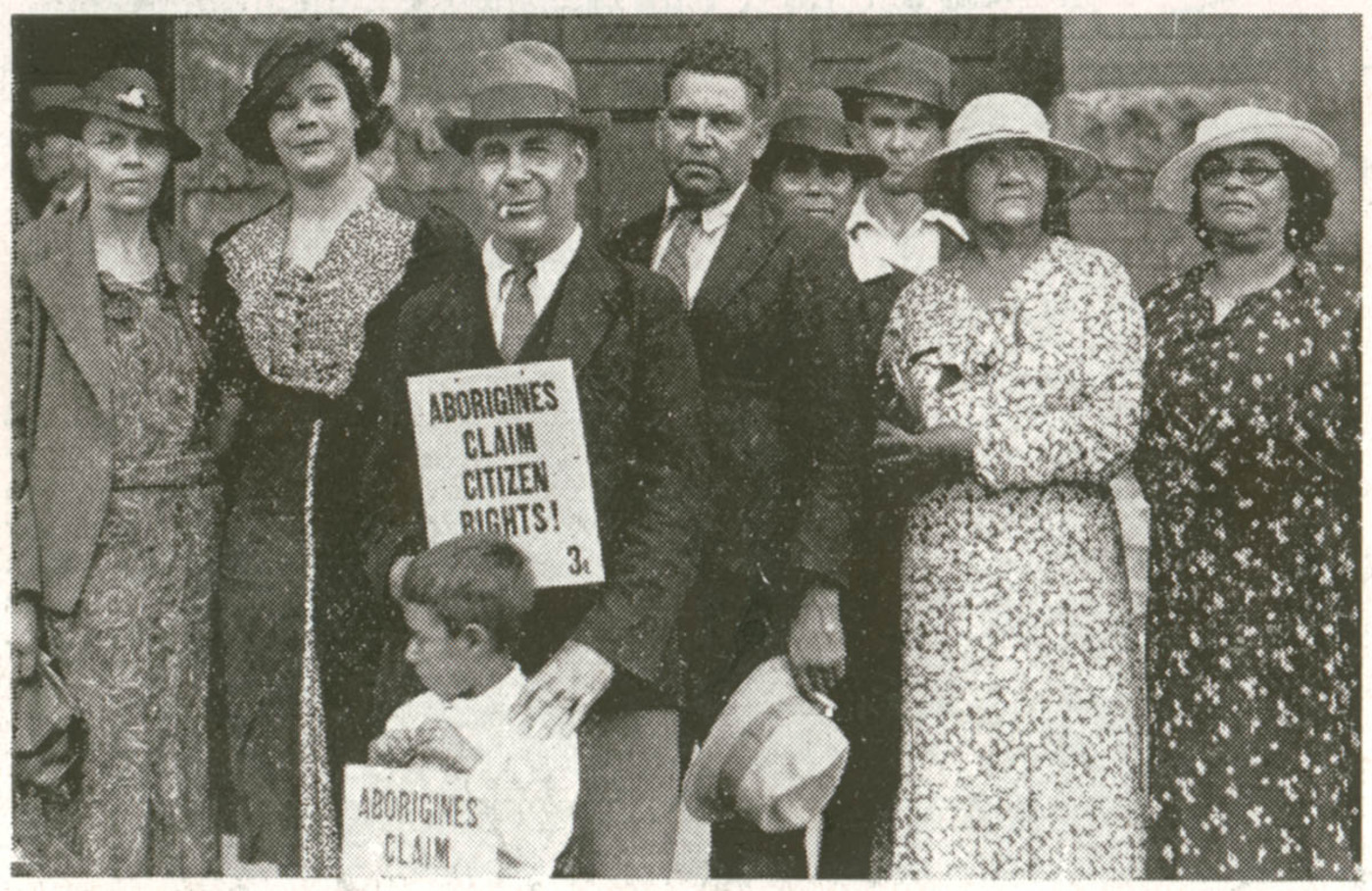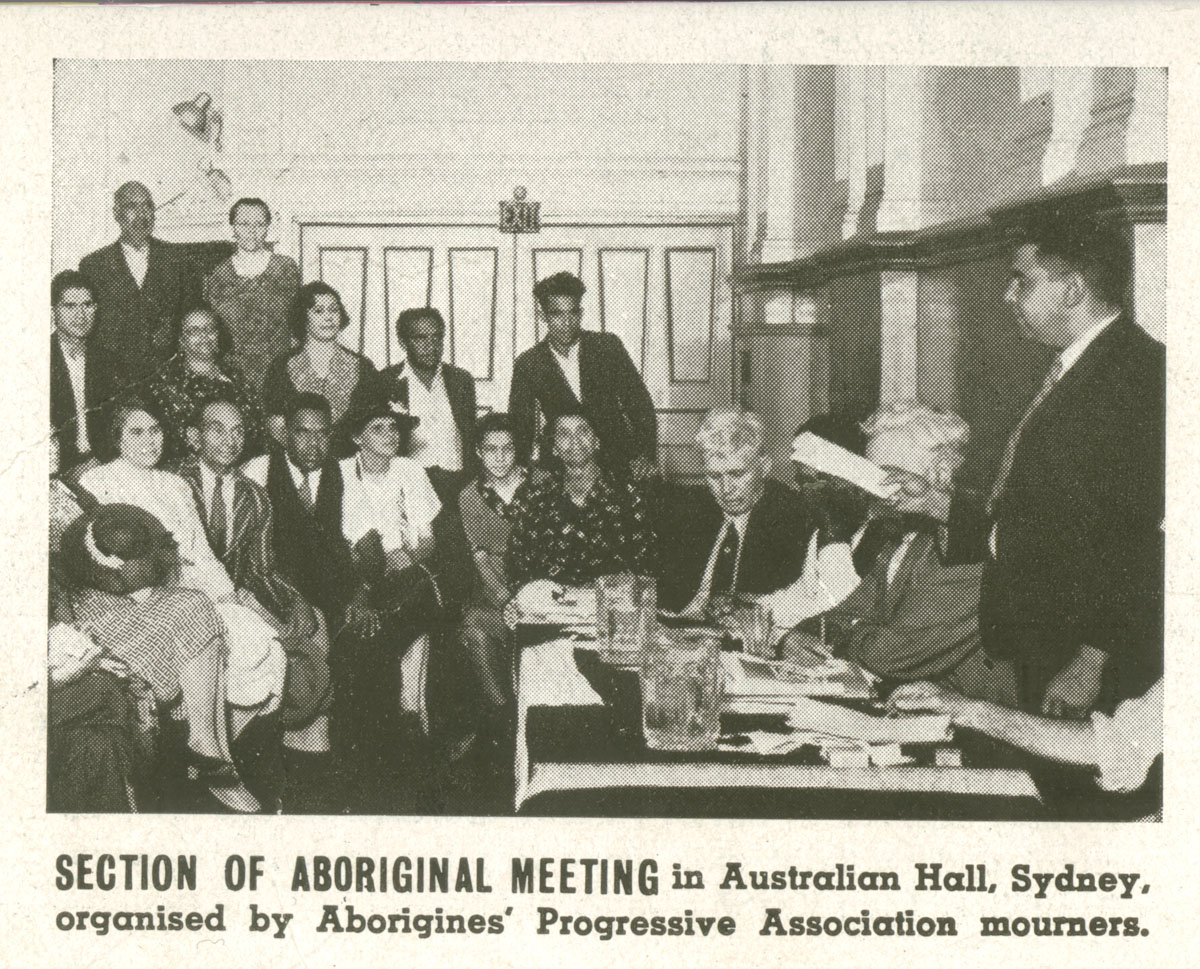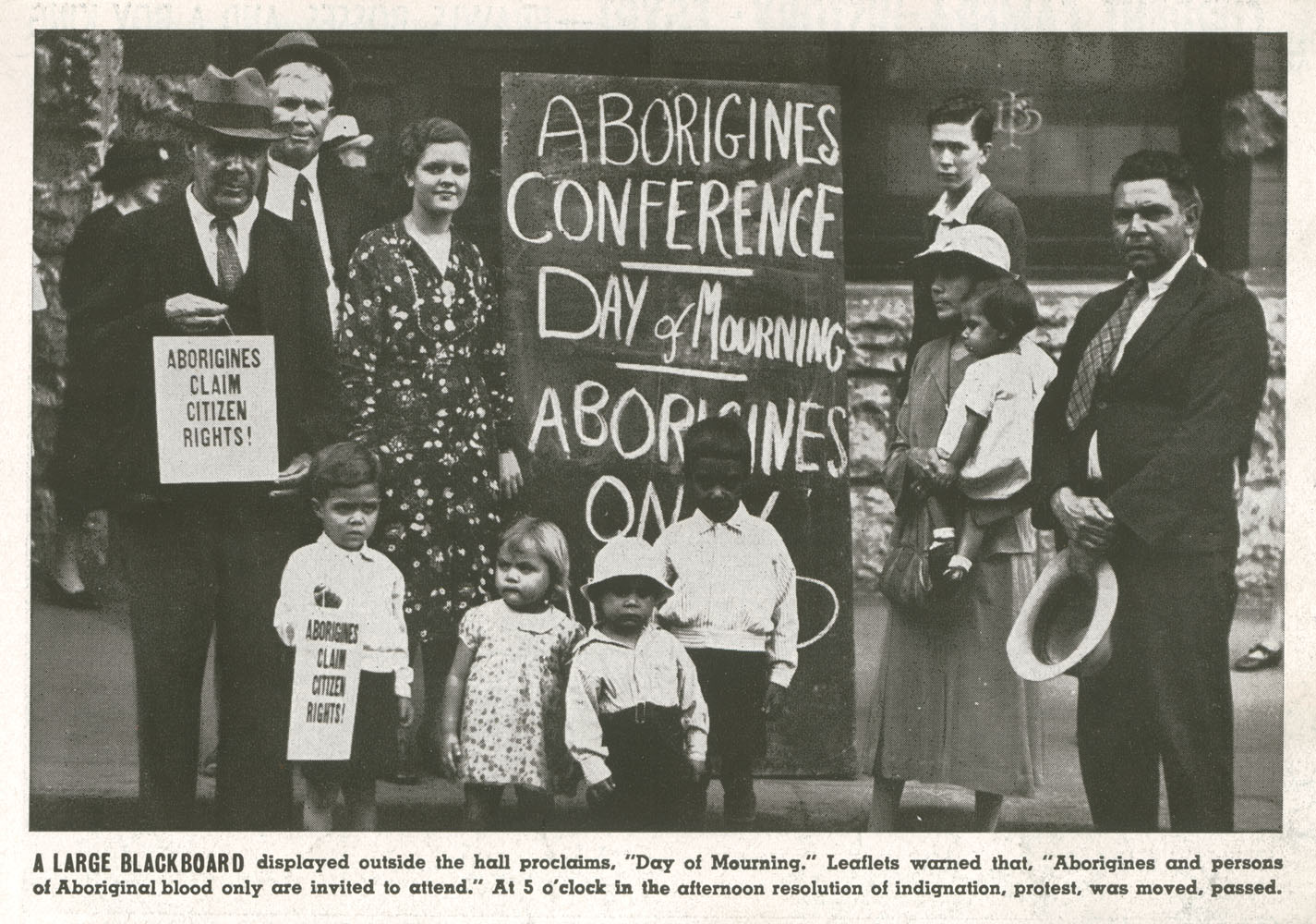The Dictionary of Sydney was archived in 2021.
Day of Mourning 1938
Citation
Persistent URL for this entry
To cite this entry in text
To cite this entry in a Wikipedia footnote citation
To cite this entry as a Wikipedia External link
Day of Mourning 1938
[media]On 26 January 1938, as Australians celebrated the sesquicentenary of European settlement, about 100 Aboriginal men, women and children gathered in a hall at 150–152 Elizabeth Street in Sydney, known as the Australian Hall. At the time, Australian Hall was a popular venue for concerts, dances, and other social activities.
They called the event a Day of Mourning and Protest because, in the words of the organisers of this gathering,
the 26th of January, 1938 is not a day of rejoicing for Australia's Aborigines; it is a day of mourning. This festival of 150 years of so-called 'progress' in Australia commemorates also 150 years of misery and degradation imposed upon the original native inhabitants by the white invaders of this country.
The protesters' intention was to bring awareness of their plight to non-Indigenous Australians, in order to gain support for their proposal to dismantle the Protection Boards then operating, and extend full citizen rights to Aboriginal people. The Day of Mourning was attended by Aboriginal activists who came from all over Australia, after organisers requested that only people of Aboriginal heritage attend. The meeting was held in the Australian Hall after use of the Town Hall was refused.
[media]Among the organisers were Bill Ferguson, Jack Patten and other members of the Aborigines Progressive Association, William Cooper and the Australian Aboriginal League, Margaret Tucker, J Connelly, Tom Foster, Pearl Gibbs, Helen Grosvenor, Jack Johnson, Jack Kinchela, Bert Marr, Pastor Doug Nicholls, Henry Noble, Tom Pecham, and Frank Roberts.
[media]The event was covered by the press and radio, and Prime Minister Joseph Lyons agreed to receive a deputation of the delegates a few days later. This eventually led to major reforms of the Protection Boards, and eventually to the 1967 Referendum, which approved the counting of Aboriginal people in the national census and gave the Commonwealth power to legislate for them, overruling state law. This referendum, on 27 May 1967, recorded the largest ever 'Yes' vote in a referendum to alter the Australian constitution. Many Aboriginal people considered that changing the relevant sections of the Federal Constitution was essential in gaining formal recognition of their existence as people of their own country. The 'Yes' vote is generally accepted as the first step that eventually resulted in the granting of full rights to Australia's Indigenous population.
[media]The 1938 Day of Mourning was a unique event in Aboriginal history. It was the first national Aboriginal civil rights gathering and represents the identifiable beginning of the contemporary Aboriginal political movement. The Australian Hall, by association, became extremely significant to Indigenous heritage, and is now listed on the National Register of heritage places.
References
'1967 Referendum', Didj 'u' Know stories, Message Club website, http://www.abc.net.au/messageclub/duknow/stories/s888141.htm, viewed 13 January 2009
Cyprus Hellene Club and Australian Hall, Australian Heritage Database website, http://www.environment.gov.au/cgi-bin/ahdb/search.pl?mode=place_detail;place_id=19576, viewed 13 January 2009
'Significant Aboriginal Events in Sydney', Barani website, http://www.cityofsydney.nsw.gov.au/barani/themes/theme6.htm, viewed 13 January 2009






